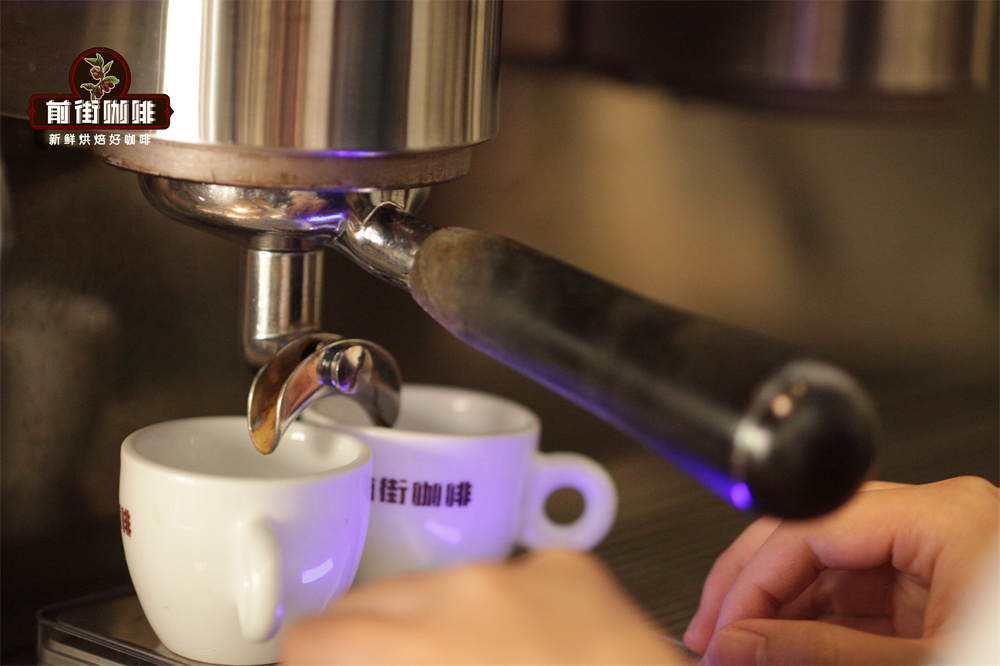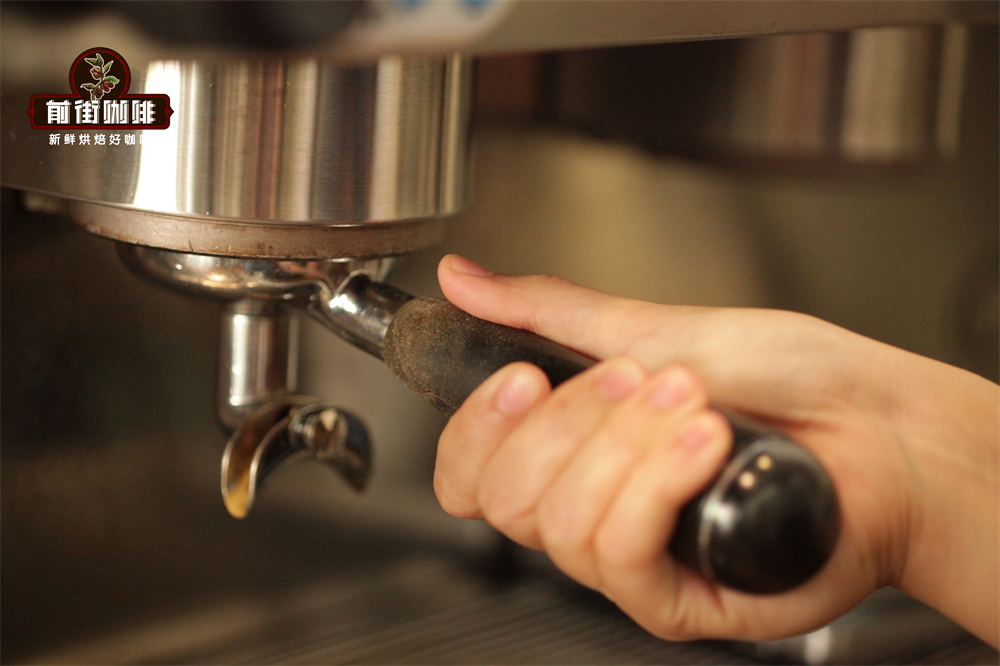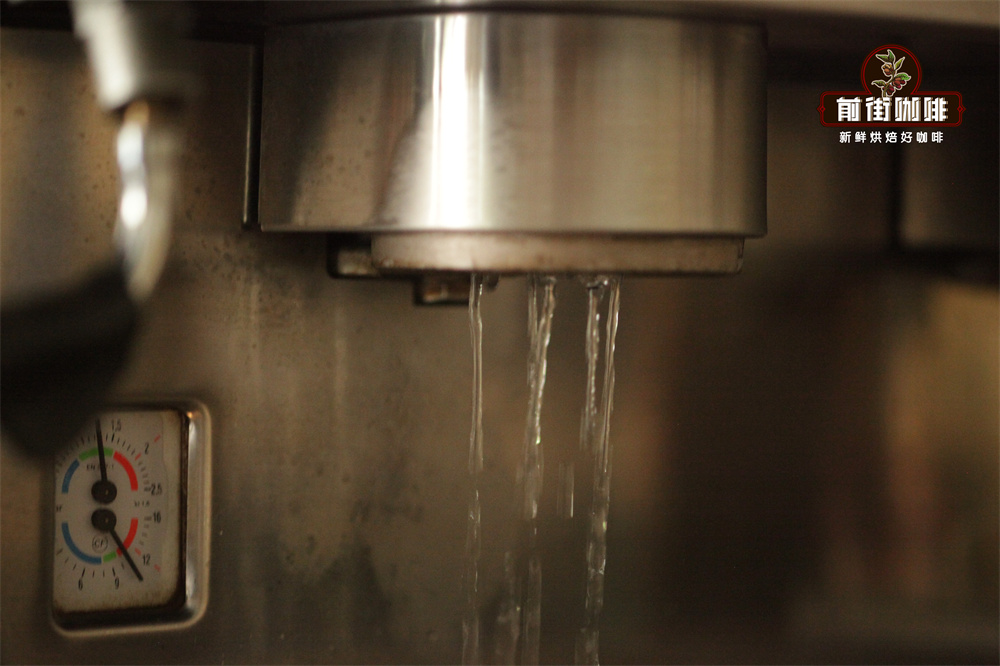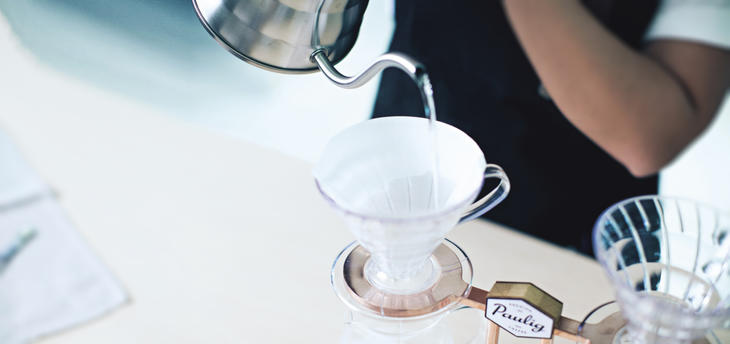How to produce espresso oil? How to make Italian concentrated Oil Rich Coffee Bean recommendation

What makes an espresso? pressure.
Inevitably, there is fat, the volume of espresso, the characteristics of espresso beans themselves, but in the end, stress.
Why is stress so important? How does it affect the quality of espresso? Why are 9 bar pressures the most commonly used?
I'm a problem with stress, so I consulted Cafflano's Stephen Kim for an answer. Cafflano's espresso extraction equipment has won a lot of awards and is the first manual device that claims to maintain 9 bar pressures during the extraction process. Who else can better solve my problem besides him?
What's the pressure?
The pressure is measured on the basis of the barometer, that is, the pressure applied by the atmosphere. It can basically be understood as the weight of the atmosphere at sea level.
Espresso is usually extracted at nine atmospheric pressures (nine bar), or nine times the weight of the atmosphere at sea level. "espresso has a long history, and nine bar is the best tested pressure." Stephen told me.
You can further imagine a bunch of bicycles pumping air. Most bicycle tires can only be pumped to 32 PSI (pounds per square foot), and people can reach as high as 65-85 PSI after riding them.
No pressure, no espresso.

How to control the pressure
Imagine directly applying 130 PSI of high pressure to the coffee powder during the extraction process, and the result will definitely look like a piece of shit. This means that we have to find a way to control the pressure of nine bar-which goes to the core of espresso theory.
How should we control the extraction pressure? It is controlled by adjusting pressed powder and extraction time. Pressed powder is made to avoid pressure to make the water pass quickly, we need pressed powder to produce appropriate resistance to the flow of water.
Therefore, it is necessary to ensure that the degree of grinding is appropriate. All coffee can be used to concentrate, but make sure it is properly grinded, and then fill it into a powder bowl to form the structure of pressed powder; the surface of pressed powder produces a dense, uniform surface to resist the pressure of water.
Let's take a look at the extraction time, now the situation will be a little more complicated.
Put pressure on beans.
There are many theories about the extraction time, but generally speaking, the time to make a concentrated handful is about 25-30 seconds-on the basis of nine bar. Lower pressure requires longer extraction time; higher pressure takes shorter time.
In fact, it's a little more complicated, because coffee takes some time to get the extraction in place, and even if you've increased the pressure, a 12-second concentration of a cup of extraction is definitely not what you want.
The time of extraction also depends on many factors: the degree of grinding, the characteristics of the coffee itself, the water temperature, the amount of extraction, and the barista's personal skills. Judging from the above factors, the choice of grinding degree does not seem to be much. This means that powder, extraction, and time are actually the main variables in making espresso (unless you already have high-end equipment that can regulate pressure and / or water temperature).
There will also be some baristas who advocate pressure swing extraction: first pre-soak at low pressure, then increase the pressure to 9 bar, and then reduce the pressure to the end of the extraction. Maxwell Colonna-Dashwood (no matter who the champion is for the time being) advocates production under the pressure of 6 bar. Similarly, we should always learn about concentrated extraction, and its production theory has been evolving. For now, of course, nine bar are still mainstream; variable pressure exists only on high-end (expensive) machines so far.
Why do we need to control these variables? Such as grinding degree and water temperature?
Let's take light-roasted and moderately roasted beans as an example. Roasting reduces the honeycomb tissue density of coffee beans, making it easier for coffee to dissolve in water. Lightly baked beans are more difficult to dissolve because of their low baking degree; this may lead to insufficient extraction-increased acidity, or even difficult to taste-unless an extraction solution corresponding to the bean is found. This is why many bakers make different "concentrated versions" and "hand-made versions" of the same bean, and the concentrated version is baked deeper than the hand-made version. )
So the summary is: espresso has many factors, including extraction time, grinding degree, water temperature, extraction pressure and other aspects. But for making espresso, what you need is the right degree of grinding, the pressure of 9 bar, and the extraction time between 25 and 30 seconds. Of course, there are many other factors that make a great espresso: the filling strength, the baking date of the coffee beans, the amount of powder, the density of the beans, the quality of the machinery and equipment, the size of the powder bowl, the hardness of the water, room temperature. ... But these are already another area of discussion.

A good espresso maker depends on the advantages of time, place and people and the cooperation of many aspects.
Sort out the ideas about grease.
Let's look at another key point: grease. Freshly extracted espresso is covered with beautiful golden grease. "this is extracted under the pressure of 7-9 bar." Stephen told me.
Concentrated oil is produced by the fat and oil of coffee beans, and although it is often regarded as an essential part of good espresso, it varies from bean to bean. Washed coffee beans, for example, usually produce less oil. Here, the thickness of oil can not be used as an indicator of the quality of coffee. Concentrated oil can bring a good look and feel to coffee (customers also like it), and without enough pressure, it will not form oil.
No pressure, no grease.
How to maintain stress: rely on a coffee maker
What do we use to ensure a constant pressure of 9 bar during the extraction process? Generally speaking, it is achieved through piston pull rod, steam power or pressure pump.
Many traditional espresso machines are still in the form of drawbar machines, and many coffee shops still use them. The rod puller provides the ultimate sense of control for baristas. When operating the pull rod machine, the pull rod is pulled up, and the hot water is sucked through the powder bowl by vacuum. This requires higher production skills and experience of baristas.
The steam engine, on the other hand, is another form of machine in which boiling water and steam penetrate the coffee pressed powder. This kind of machine generally does not discuss how many bar pressures there are.
Pressure pump espresso machine is the most common, through the pressure pump to maintain water pressure
Home-made and manual enrichment equipment
The perfect espresso is based on professional machinery and precise regulation, which also gives us an idea of how to keep household devices under constant pressure-and make it happen on more devices.
Many coffee companies have begun to improve their technology. Cafflano, for example, is currently applying for a patent to create a stable pressure environment based on Pascal's principle and apply it to their portable enrichment device, Cafflano Kompresso, where knowledge of hydrodynamics is also involved.
Pascal's law means that due to the fluidity of the liquid, the pressure change of a certain part of the static fluid in the closed container will be transferred in all directions. It seems that you don't know up, but to put it simply, when you push the fluid into a container with a smaller diameter than the original container, the pressure you exert has actually been magnified.
The hydraulic elevator in the garage is actually the best example of using the Pascal principle, and Cafflano is also based on the hydraulic principle to achieve constant pressure in the extraction process. The Cafflano Kompresso weighs less than 200g, which is much lighter than the average Italian coffee maker. However, it can produce a pressure of 9 atmospheres to produce 15g espresso.
Komspresso design principle
Whenever you make espresso, you can't ignore these factors: water quality, temperature, freshness of beans, baking, and the craftsmanship of baristas-but if you want real espresso, stress is an essential part. And in most cases, you need 9 bar pressures.
Source: PerfectDailyGrind
Author: Danielle Kilbride
Important Notice :
前街咖啡 FrontStreet Coffee has moved to new addredd:
FrontStreet Coffee Address: 315,Donghua East Road,GuangZhou
Tel:020 38364473
- Prev

Milk coffee coffee latte Meiji milk coffee latte how does it taste
Professional coffee knowledge exchange more coffee bean information please follow the coffee workshop (Wechat official account cafe_style) Meiji milk taste fuller, sweetness, flavor stronger Meiji Suzhou factory Meiji Dairy as a professional dairy company, always adhering to high quality, the use of modern production technology to provide Chinese customers with low-wet milk, yogurt and whipped cream and other products Ming
- Next

Coffee brewing water science-is there really the most suitable water quality for coffee brewing?
Professional coffee knowledge exchange more coffee bean information Please pay attention to the water quality of coffee in the coffee workshop (Wechat official account cafe_style), which directly affects the taste, aroma, consistency and many other health elements of all coffee. The key influencing factor is the mineral composition in the water. Calcium, magnesium, sodium, potassium and other mineral ions in water will affect the thermokinetic extraction of coffee.
Related
- Beginners will see the "Coffee pull flower" guide!
- What is the difference between ice blog purified milk and ordinary milk coffee?
- Why is the Philippines the largest producer of crops in Liberia?
- For coffee extraction, should the fine powder be retained?
- How does extracted espresso fill pressed powder? How much strength does it take to press the powder?
- How to make jasmine cold extract coffee? Is the jasmine + latte good?
- Will this little toy really make the coffee taste better? How does Lily Drip affect coffee extraction?
- Will the action of slapping the filter cup also affect coffee extraction?
- What's the difference between powder-to-water ratio and powder-to-liquid ratio?
- What is the Ethiopian local species? What does it have to do with Heirloom native species?

